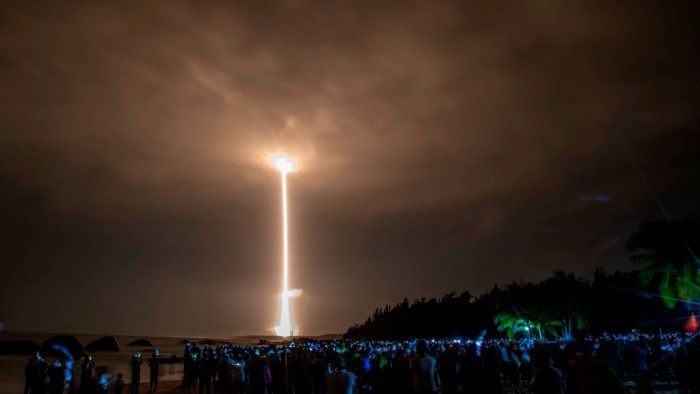China conducted two hypersonic weapons tests this summer

Roula Khalaf, Editor of the FT, selects her favourite stories in this weekly newsletter.
The Chinese military conducted two hypersonic weapons tests over the summer, raising US concerns that Beijing is gaining ground in the race to develop a new generation of arms.
On July 27 the Chinese military launched a rocket that used a “fractional orbital bombardment” system to propel a nuclear-capable “hypersonic glide vehicle” around the earth for the first time, according to four people familiar with US intelligence assessments.
The Financial Times this week reported that the first test was in August, rather than at the end of July. China subsequently conducted a second hypersonic test on August 13, according to two people familiar with the matter.
Three people familiar with the first test in July said it stunned the Pentagon and US intelligence because China managed to demonstrate a brand new weapons capability, although they declined to elaborate on the details.
One person said government scientists were struggling to understand the capability, which the US does not currently possess, adding that China’s achievement appeared “to defy the laws of physics”.
Space and missile experts have been debating the Chinese test since the FT revealed the event at the weekend.
Jeffrey Lewis, a nuclear weapons expert at Middlebury Institute of International Studies at Monterey, said China appeared to have developed a new innovation, but stressed the need to maintain a degree of scepticism.
“We should be open to the reality that China is also capable of technological innovation,” he said.
“But I would be careful about exaggerated characterisations that may help excuse a mundane intelligence failure. If we say some innovation is impossible to imagine, then no one is really responsible for missing it.”
The White House on Wednesday declined to comment. US government officials, including the defence secretary Lloyd Austin, have refused to confirm or deny the existence of the test, which remains classified.
President Joe Biden on Wednesday expressed concern about hypersonic weapons. Asked as he departed Washington for Pennsylvania whether he was worried about the development of the high-speed manoeuvrable weapons, he responded, “yes”.
The Chinese foreign ministry this week denied the FT story, saying it had only launched a space plane, but that test was conducted on July 16. The Chinese embassy in Washington declined to comment on Wednesday.
Speaking to the US military newspaper Stars and Stripes in Germany this week, Admiral Charles Richard, the head of Strategic Command who oversees US nuclear forces, said he was “not surprised” by the FT report. He added he also would not be surprised if more reports emerge next month.
Richard, who has ramped up warnings about Chinese nuclear forces this year, told the newspaper that the “breathtaking expansion” meant China could “now execute any possible nuclear employment strategy”.
Over the summer satellite images emerged that showed China was building several hundred silos to house intercontinental ballistic missiles.
Ned Price, state department spokesperson, this week said the Biden administration was very concerned about the rapid expansion of China’s nuclear forces, including its development of “novel delivery systems”.
Follow Demetri Sevastopulo on Twitter
Comments